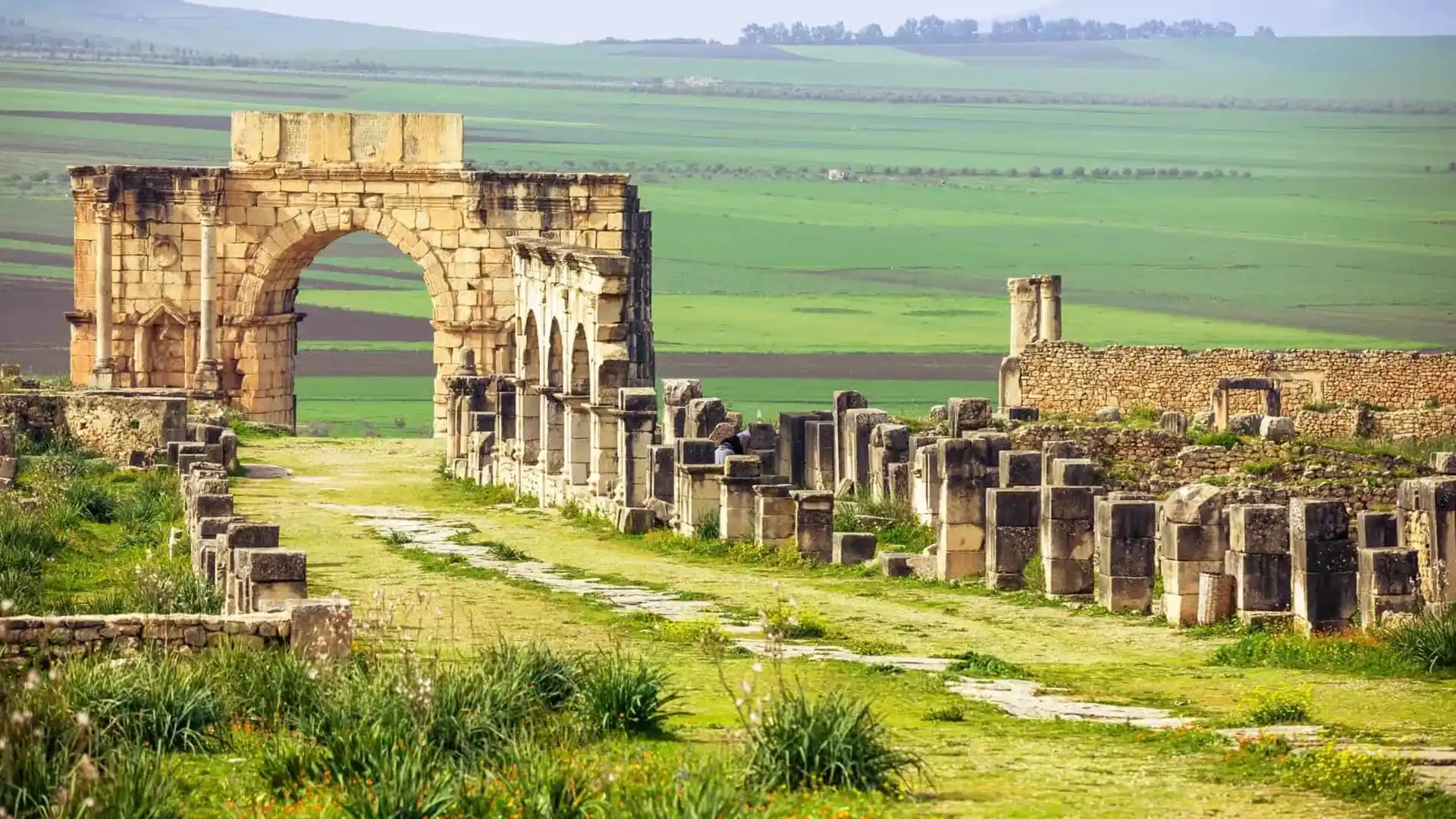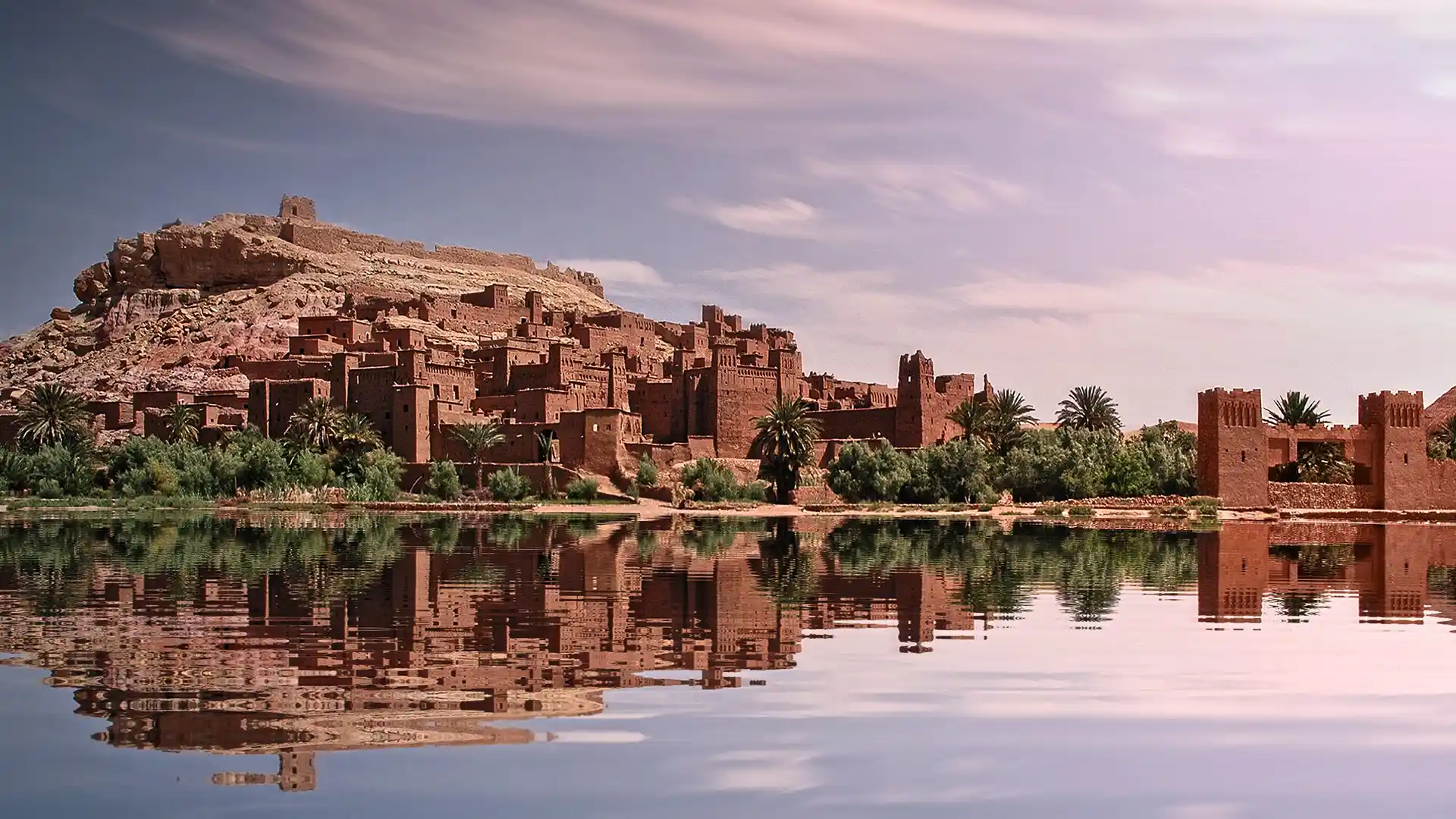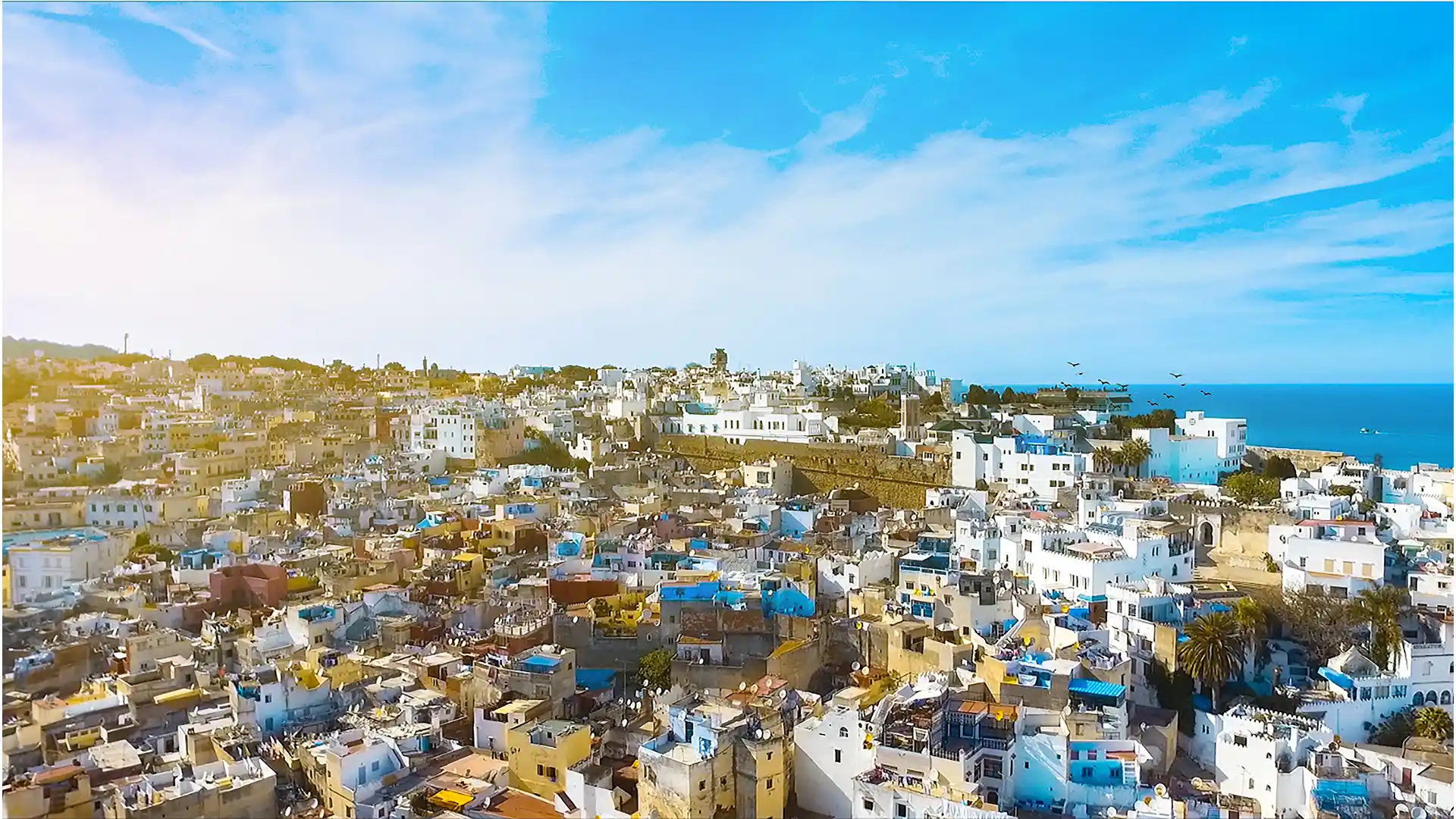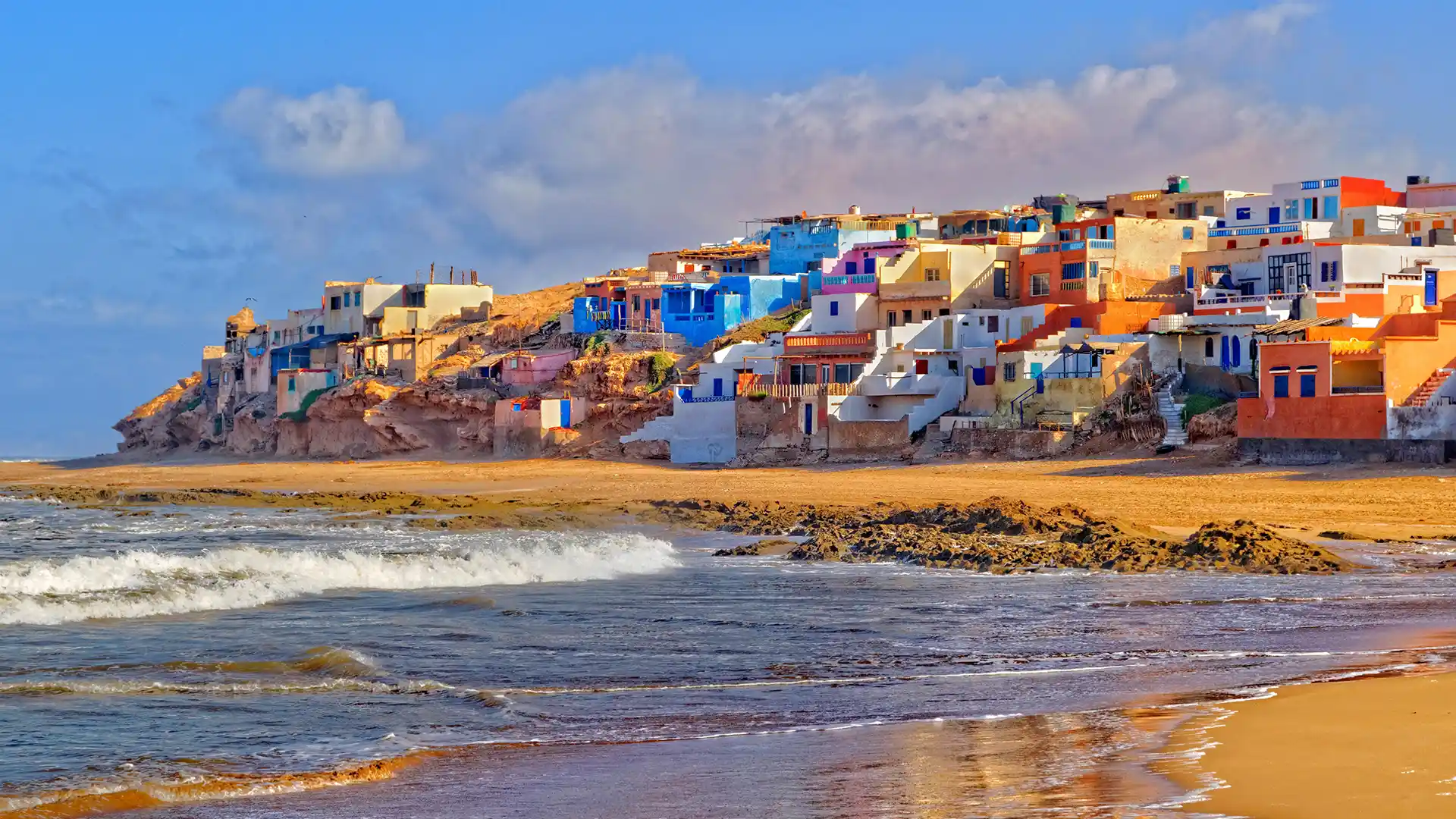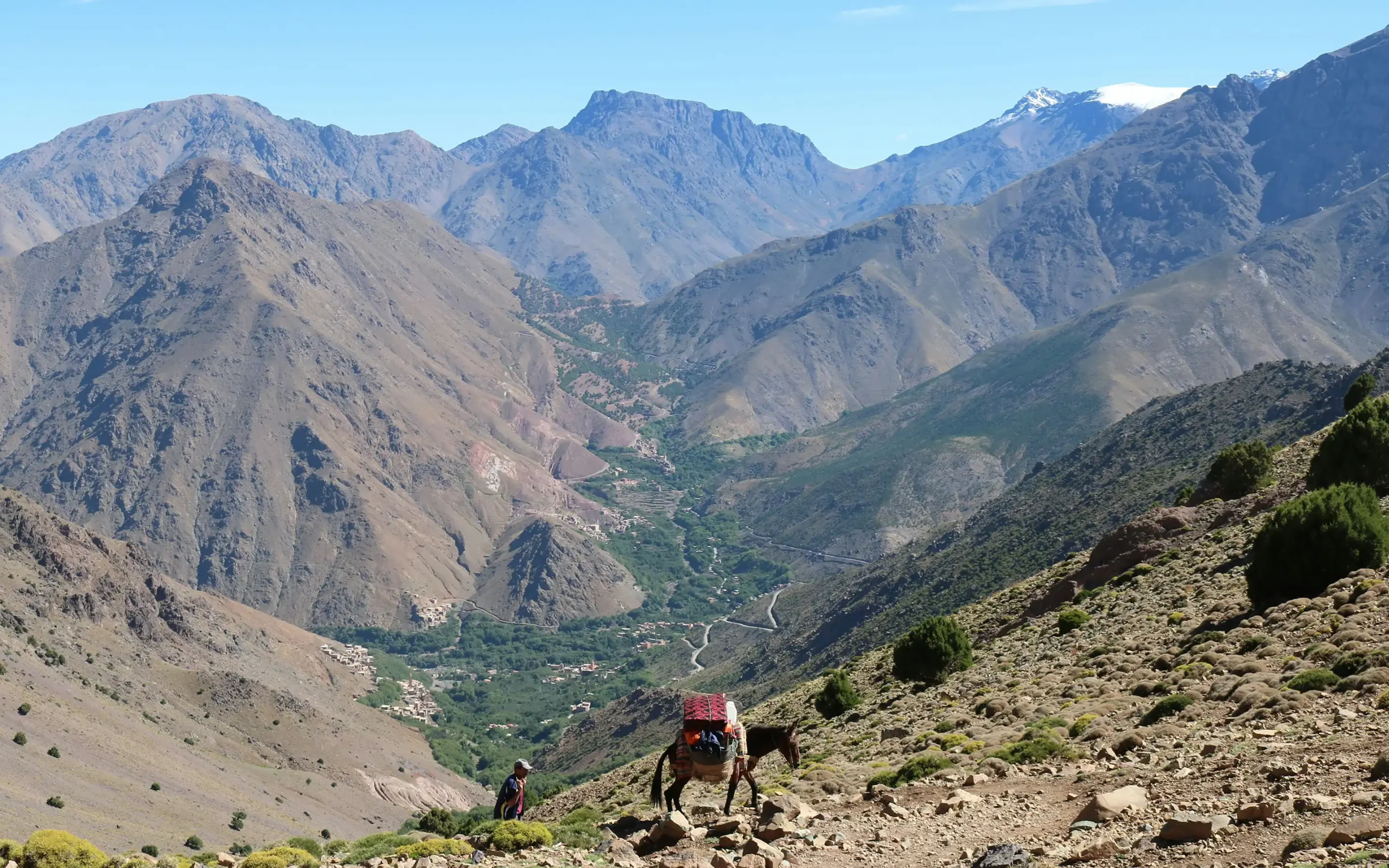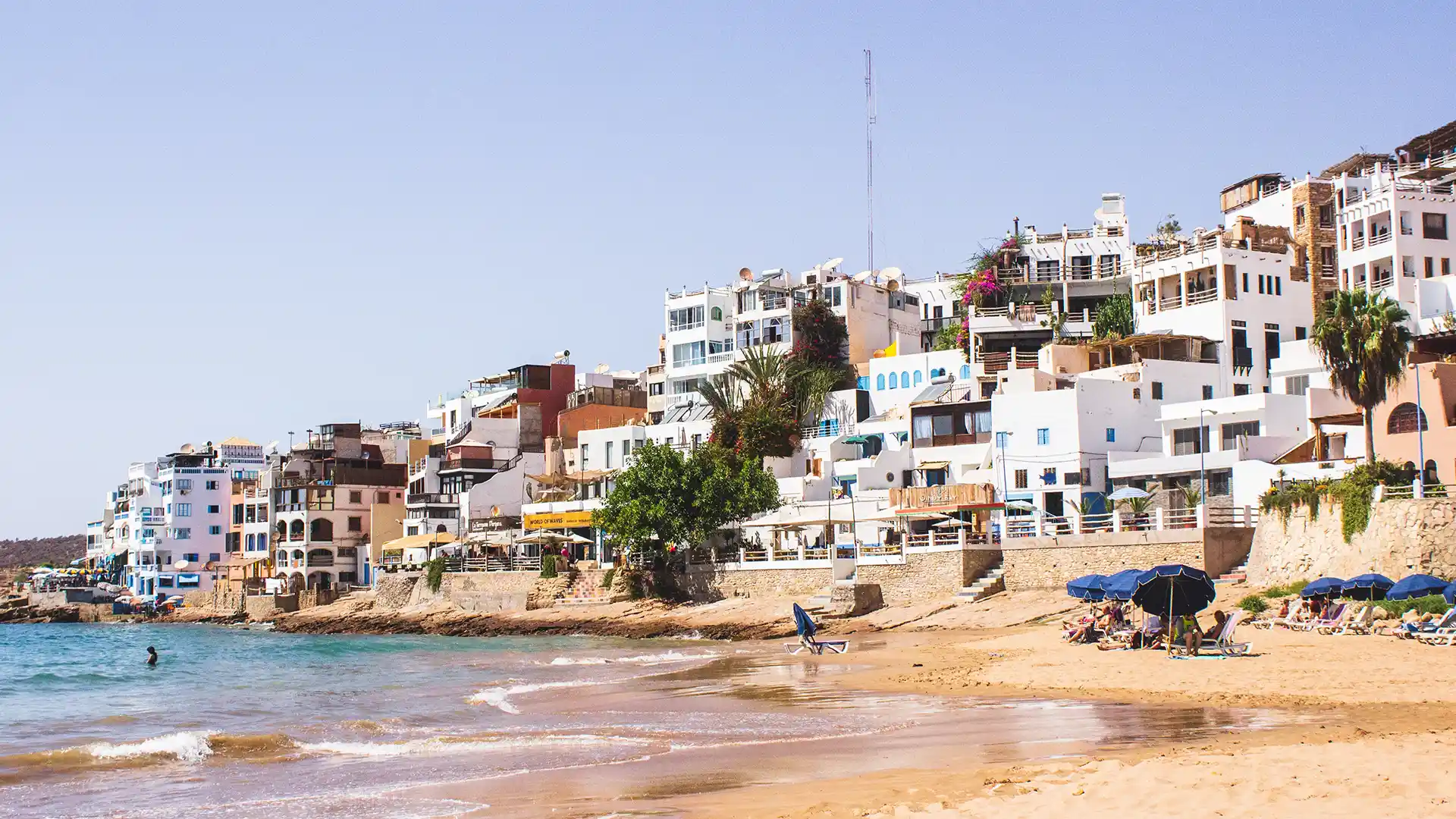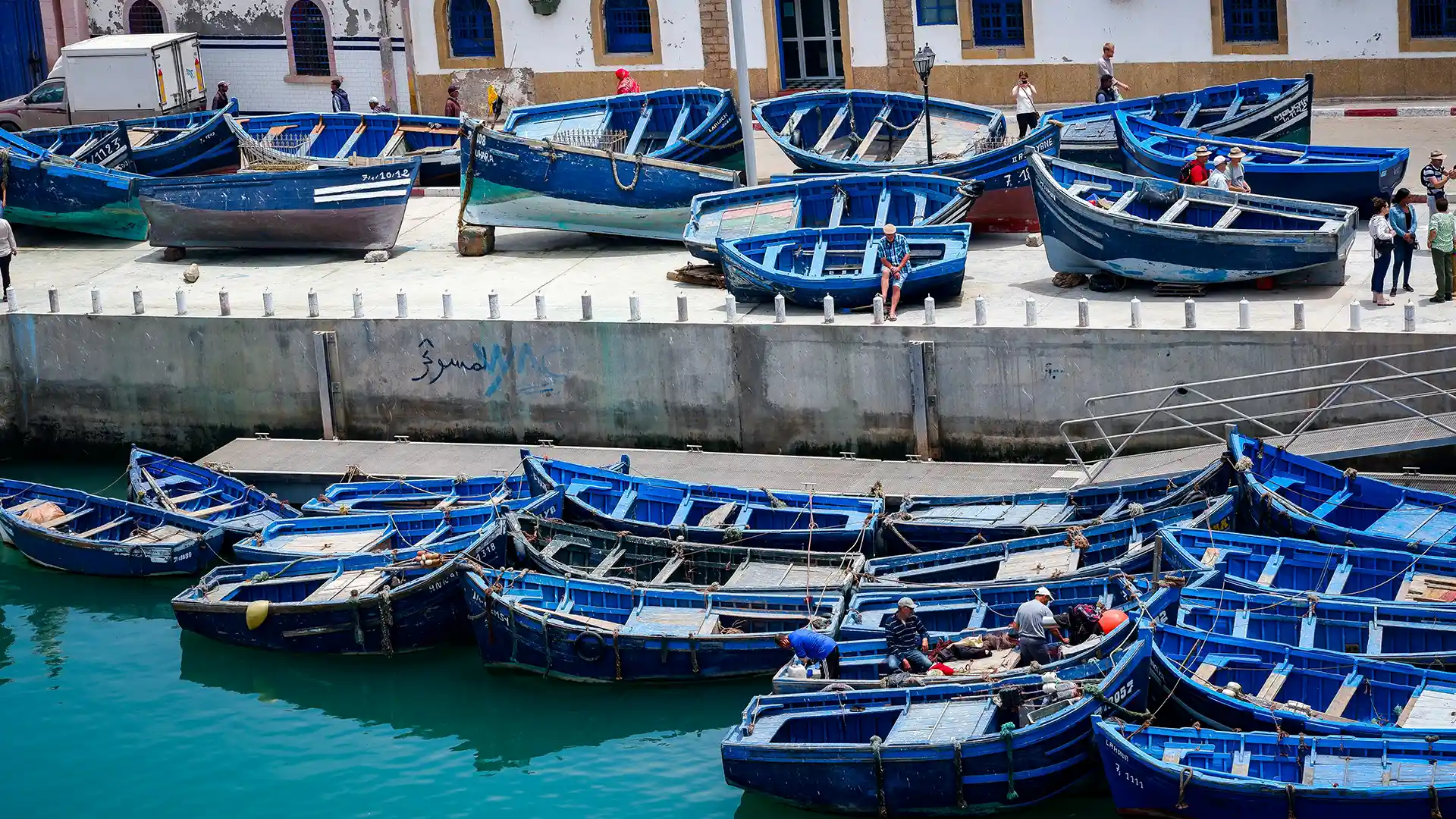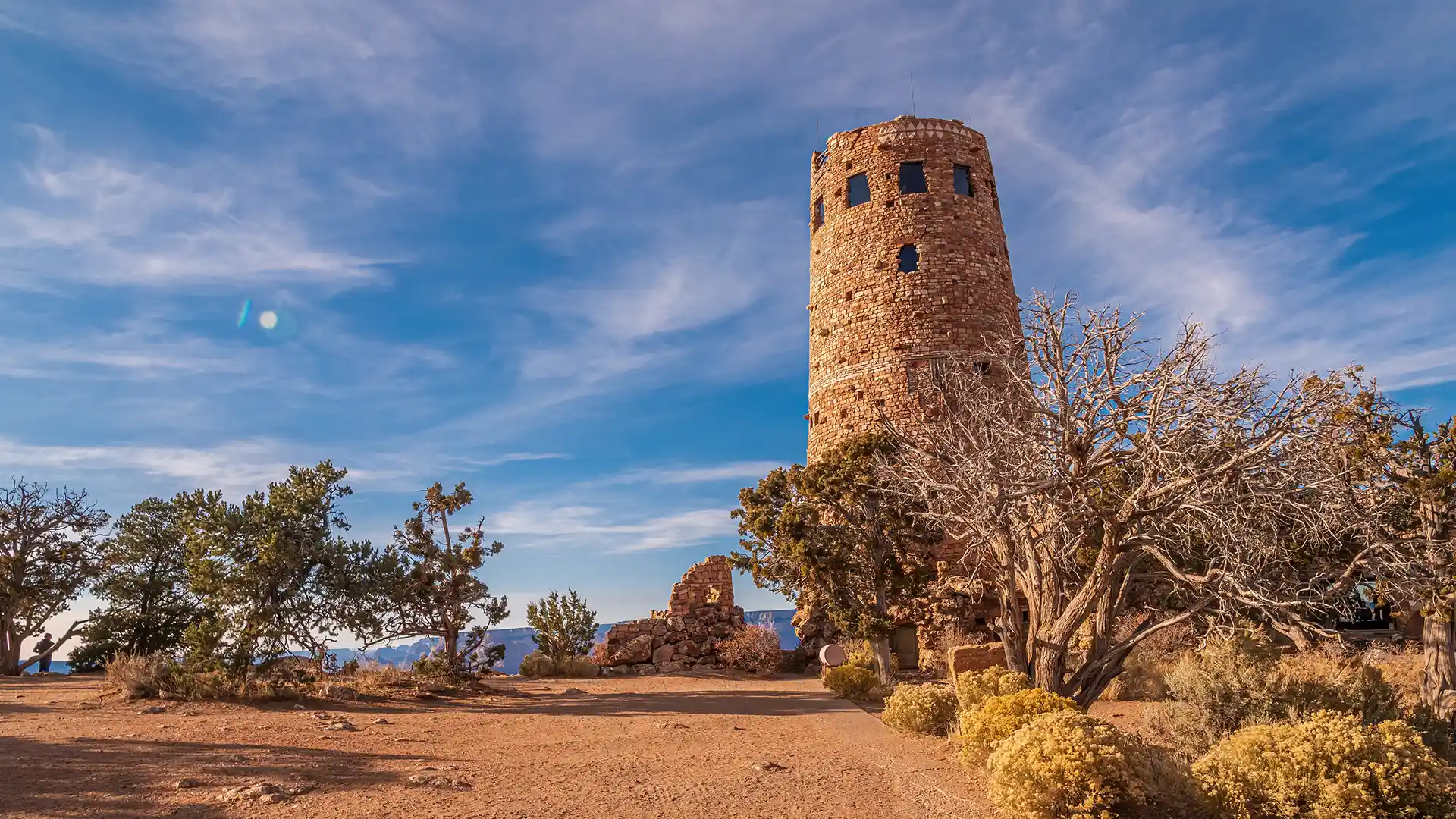Experience Breathtaking Morocco
Experience Breathtaking Morocco Morocco
About Morocco
Morocco, a mesmerizing destination in North Africa, is celebrated for its rich history, vibrant culture, and stunning landscapes. From the bustling markets of Marrakech and Fes to the serene beaches of Agadir and Essaouira, Morocco offers a diverse array of experiences. The majestic Atlas Mountains and the vast Sahara Desert provide opportunities for adventurous activities like hiking, camel trekking, and sandboarding. The country’s intricate architecture, seen in its palaces, mosques, and medinas, reflects a blend of Arab, Berber, and French influences. Morocco’s vibrant cities are alive with color and activity, featuring lively souks, exquisite gardens, and historic sites. Culinary enthusiasts will delight in the flavorful Moroccan cuisine, characterized by dishes like tagine and couscous, accompanied by fragrant mint tea.
Morocco, situated in the northwest corner of Africa, boasts a rich history that reflects its strategic location and diverse cultural influences. From ancient Berber civilizations to modern independence, Morocco’s past is a fascinating tapestry of dynasties, trade, and cultural exchange.
The earliest known inhabitants of Morocco were the Berbers, who have lived in the region for at least 5,000 years. The Phoenicians established trading posts along the coast in the 12th century BCE, followed by the Carthaginians. In the 1st century CE, Morocco became part of the Roman Empire’s province of Mauretania Tingitana, with the city of Volubilis serving as a major center of Roman administration and culture.
In the 7th century, Arab armies brought Islam to Morocco, and the region quickly became an important part of the Islamic world. The Idrisid dynasty, founded by Idris I in 788 CE, was the first Islamic dynasty in Morocco, establishing Fez as a significant cultural and religious center. Subsequent dynasties, such as the Almoravids and Almohads, expanded Moroccan territory and influence, controlling vast regions of North Africa and Spain.
The 16th century saw the rise of the Saadian dynasty, which defended the country against foreign invaders and established Marrakech as their capital. The Battle of the Three Kings in 1578 was a significant event where the Saadians defeated a Portuguese invasion, solidifying Moroccan sovereignty. The Alaouite dynasty, which ascended to power in the mid-17th century, still rules Morocco today. Under the Alaouites, Morocco maintained its independence and engaged in trade and diplomacy with European powers.
The late 19th and early 20th centuries were marked by increased European interest in Morocco. France and Spain established protectorates over different parts of the country in 1912. The French controlled most of the country, while Spain administered the northern and southern regions. The colonial period brought significant infrastructural development but also sparked nationalist movements.
Moroccan nationalism gained momentum after World War II, leading to the eventual restoration of independence in 1956. King Mohammed V played a crucial role in negotiating the end of colonial rule and became a symbol of national unity. His son, King Hassan II, succeeded him in 1961, steering the country through periods of political and economic challenges and laying the groundwork for modernization.
In recent decades, under the leadership of King Mohammed VI, who ascended the throne in 1999, Morocco has undertaken significant political, economic, and social reforms. The country has invested heavily in infrastructure, education, and tourism, positioning itself as a regional leader in renewable energy and sustainable development. Morocco’s cultural heritage, from the bustling medinas of Fez and Marrakech to the scenic landscapes of the Atlas Mountains and Sahara Desert, continues to attract visitors from around the world.
Geography
Morocco, located in North Africa, is a country of striking geographical diversity and cultural richness. Covering an area of approximately 710,850 square kilometers, Morocco is bordered by the Atlantic Ocean and the Mediterranean Sea to the west and north, respectively, and shares land borders with Algeria to the east and southeast, and Western Sahara to the south. The country’s varied landscape includes coastal plains, mountain ranges, and expansive deserts, each offering unique natural beauty and attractions.
The Atlas Mountains dominate the central part of Morocco, stretching from the southwest to the northeast. This mountain range includes the High Atlas, Middle Atlas, and Anti-Atlas subranges. The High Atlas, home to North Africa’s highest peak, Mount Toubkal, at 4,167 meters, is renowned for its stunning scenery, traditional Berber villages, and trekking opportunities. The Rif Mountains in the north, near the Mediterranean coast, are another significant mountain range, known for their lush, green valleys and picturesque landscapes.
To the east and southeast of the Atlas Mountains lies the vast Sahara Desert, characterized by its arid environment, dramatic sand dunes, and oases. The Erg Chebbi and Erg Chigaga dunes are popular destinations for camel treks and desert camping. Morocco’s coastal regions along the Atlantic Ocean and the Mediterranean Sea feature long stretches of sandy beaches, cliffs, and fertile plains. Major cities like Casablanca, Rabat (the capital), and Tangier are located in these coastal areas, blending modernity with historic charm.
Climate
Morocco’s climate is as diverse as its geography, influenced by the Atlantic Ocean, the Mediterranean Sea, and the Atlas Mountains. The country experiences a range of climates, from Mediterranean and oceanic along the coast to continental and arid in the interior and desert regions.
The coastal areas, including cities like Casablanca, Rabat, and Tangier, enjoy a Mediterranean climate with mild, wet winters and hot, dry summers. Winter temperatures in these regions typically range from 8°C to 17°C (46°F to 63°F), while summer temperatures range from 18°C to 29°C (64°F to 84°F). The cooling influence of the Atlantic Ocean moderates temperatures, making these coastal cities pleasant year-round.
Inland, the climate becomes more extreme, particularly in the Atlas Mountains and the eastern desert regions. The Atlas Mountains experience a continental climate, with significant variations in temperature between day and night and between seasons. In the High Atlas, winters can be harsh with snowfall and temperatures dropping below freezing, especially at higher altitudes. Summers are warm to hot, with temperatures ranging from 25°C to 30°C (77°F to 86°F) in the valleys but cooler in the higher elevations.
The Sahara Desert region in southeastern Morocco has an arid climate with scorching hot summers and mild winters. Daytime temperatures in the summer can soar above 40°C (104°F), while winter temperatures range from 5°C to 20°C (41°F to 68°F). Rainfall is scarce and occurs mostly in short, intense bursts during the winter months.
Explore the linguistic mosaic of Morocco, where the official languages are Arabic and Berber. However, the local Moroccan Arabic, a unique dialect of Maghrebi Arabic spoken in Morocco, Tunisia, and Algeria, differs significantly from standard Arabic. Even native Arabic speakers from outside the region might find it challenging to understand local conversations. French, deeply rooted in Morocco’s history as a French protectorate, holds widespread understanding and continues to be taught in schools from early grades, making it the most practical non-Arabic language to grasp.
While a minority of the most educated individuals may speak English, and some shop owners and hotel managers in urban centers also communicate in English, the linguistic preferences vary. In increasing order of prevalence, English is followed by Spanish, then French, standard Arabic, and, ideally, Moroccan Arabic or Berber languages, depending on the specific region. This linguistic diversity reflects Morocco’s rich cultural tapestry, inviting travelers to engage with locals in their preferred languages and enhancing the immersive experience of the journey.
Getting In
All visitors to Morocco must possess a valid passport. However, for travelers from select countries, obtaining a visa before arrival is not necessary. Citizens of Schengen member states, Argentina, Australia, and more enjoy visa-free entry. For those requiring a visa, the Moroccan Embassy is your starting point. Visas typically have a 3-month validity and take around 5-6 working days to process, allowing tourists to stay for up to 90 days.
Travelers should be aware of health requirements. Anti-cholera vaccination certificates may be mandatory for those arriving from areas where the disease is prevalent. Additionally, if you’re bringing pets, ensure they have a health certificate less than ten days old and an anti-rabies certificate less than six months old.
Entry Points: Where Your Journey Begins
By Car: Navigating Land and Sea
Enter Morocco by car through ferry or the two open land border posts connected to the Spanish enclaves of Ceuta and Melilla. The frontier with Algeria has been closed since 1994. Algeciras and Tarifa in southern Spain offer ferry services to Ceuta and Tangier, with Tarifa being the shortest and fastest route, just 35 minutes.
By Plane: Soaring Into Morocco
Major airlines often land at Casablanca, Morocco’s primary gateway. Other popular entry points include Marrakesh, Agadir, Fes, Rabat, and Tangier. Royal Air Maroc, the flag carrier, operates flights to and from various destinations across Europe, Africa, and the Middle East.
By Boat: Nautical Routes to Morocco
Ferry connections from Spain, primarily from Algeciras, are common. This main port serves Ceuta and Tangier. Tarifa, on the southernmost tip of mainland Spain, also connects to Tangier. From France, ferries depart from Sète near Montpellier and Port Vendres near Perpignan, bound for Tangier.
Getting Around
Train: Swift Journeys Through Unique Landscapes
Trains stand out as the preferred choice for their speed, frequency, and comfort. Although the network is limited, connecting Marrakech and Tangier via Casablanca and Rabat, it remains a reliable option. A branch line to Oujda links Meknes and Fez to the main line. An exciting development is the high-speed rail line connecting Tangier to Casablanca via Rabat, with the first section to Kénitra opened in November 2018, significantly reducing travel times.
Bus: Luxury and Local Adventures
Luxury buses offer a comfortable and well-covered option for travelers, reaching almost every corner with odd departure times in some locations. Local intercity buses, while a bit hardier, often provide more legroom than their luxury counterparts.
Taxi: A Convenient Urban Choice
Taxis, both individual and professionally operated, are prevalent in cities. While they may be more expensive than other options, they provide a convenient and quick mode of transportation.
Plane: Royal Air Maroc’s Sky Network
Domestic flying is less common, but Royal Air Maroc, the national flag carrier, offers an excellent albeit pricier network to most cities.
Tramway: Navigating Casablanca’s Urban Landscape
The Casablanca tramway spans 30 km with 49 stops, forming a Y-shape. Tickets, priced at 6 dirham, must be purchased before boarding. Travelers can opt for a rechargeable ticket valid for 10 journeys or a rechargeable card with a 4-year validity.
Car: Roads Less Traveled
Driving in Morocco presents a unique traffic culture. While the main road network is well-maintained, the absence of dedicated cycling lanes and pedestrian paths in smaller cities means sharing the roads with cyclists, pedestrians, and horse-drawn vehicles.
Hitchhiking: A Cultural Travel Experience
Hitchhiking remains a common and culturally embraced mode of travel in Morocco. Large farm trucks often pick up paying passengers, providing an authentic and economical travel experience.
Currency in Morocco: A Simple Guide
Moroccan Dirham (MAD): Your Primary Currency
When you travel through Morocco, the Moroccan Dirham is your go-to currency. It’s what you’ll use for most transactions, from buying souvenirs to enjoying local treats.
International Currency Friends: The Euro (EUR)
Think of the Euro as a friendly companion to the Moroccan Dirham. In many places, they work hand in hand, making it easy for both locals and visitors to handle transactions. So, if you have Euros, you’re in good shape!
Everyday Money Matters
As you explore Morocco, whether you’re wandering through bustling markets, trying local dishes, or soaking in the culture, your money is your tool. Each note and coin contribute to your daily adventures, ensuring you can navigate the country with ease.
Currency Tips for Your Moroccan Journey
Remember, the Moroccan Dirham is the star of the show, but having some Euros on hand can be handy. So, whether you’re exploring historic sites, shopping in vibrant souks, or savoring the flavors of Morocco, understanding these currencies will make your North African journey smoother and more enjoyable.
Unveiling Morocco's Beauty
General Knowledge Base
General information about Morocco.
The Moroccan flag represents purity and peace as it has a green pentagram in the center against a red background.
The official language of Morocco is Arabic, but French and Berber are also widely spoken.
The Moroccan architecture is famous for its intricate tile work, beautiful mosaics, and ornate plaster carvings.
The ancient city of Ait Ben Haddou in Morocco inspired the famous game of thrones.
The largest traditional market in Morocco is called Souk Semmarine in Marrakech.
The highest mountain in Morocco is called Toubkal which is part of the Atlas Mountain range.
The famous Moroccan sweet pastry is called a “kaab el ghzal” which translates to “gazelle’s ankles” due to its shape.
The famous Moroccan festival celebrating the end of the fast of Ramadan is called Eid al-Fitr.

